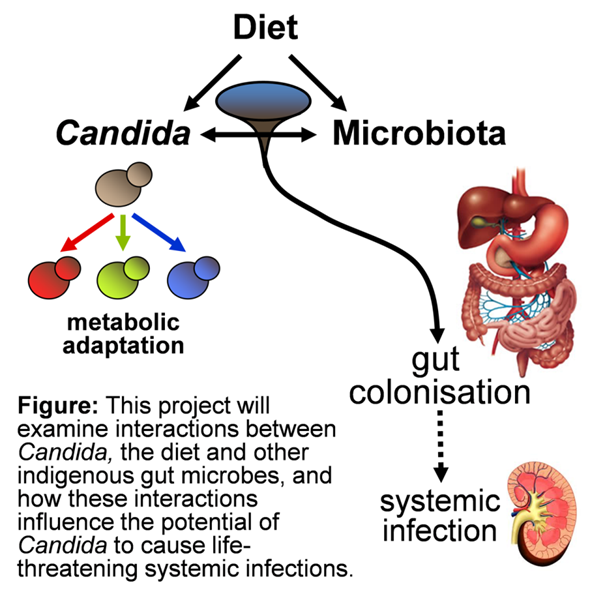Al Brown, Alan Walker & Megan Lenardon
Candida albicans is a frequent cause of yeast infections. Episodes of oral and vaginal thrush are common. Candida also causes life-threatening bloodstream infections in intensive care patients. New therapeutic approaches are required to complement current antifungal drug regimens because the morbidity of these bloodstream infections is unacceptably high.
Most people carry Candida in their gut as part of their normal microbial flora (the microbiota), and these Candida cells can be a source of bloodstream infections. In healthy individuals, Candida outgrowth and infection are normally prevented by competition with other indigenous gut microbes and by our immune defences.
However, these defences can become compromised in intensive care patients, allowing Candida to escape the gut and infect the bloodstream. Candida is able to spread and cause infections because this yeast has the metabolic flexibility to exploit the different nutrients in these different niches. Clearly, strategies that reduce Candida colonisation in hospital patients will reduce the likelihood of their contracting life-threatening bloodstream infections. These strategies might include the manipulation of gut microbes, for example via dietary changes, probiotic supplementation or antibiotic use [Figure].
In this project we will test the feasibility of these ideas by defining how Candida interacts with the microbiota of the human gut [Figure]. We will test how this yeast competes with these other microbes for the local nutrients in the gut, and how this competition is influenced by local immunological defences. In doing so we will establish an important new collaboration between the Aberdeen Fungal Group and the Rowett Institute of Nutrition and Health.

